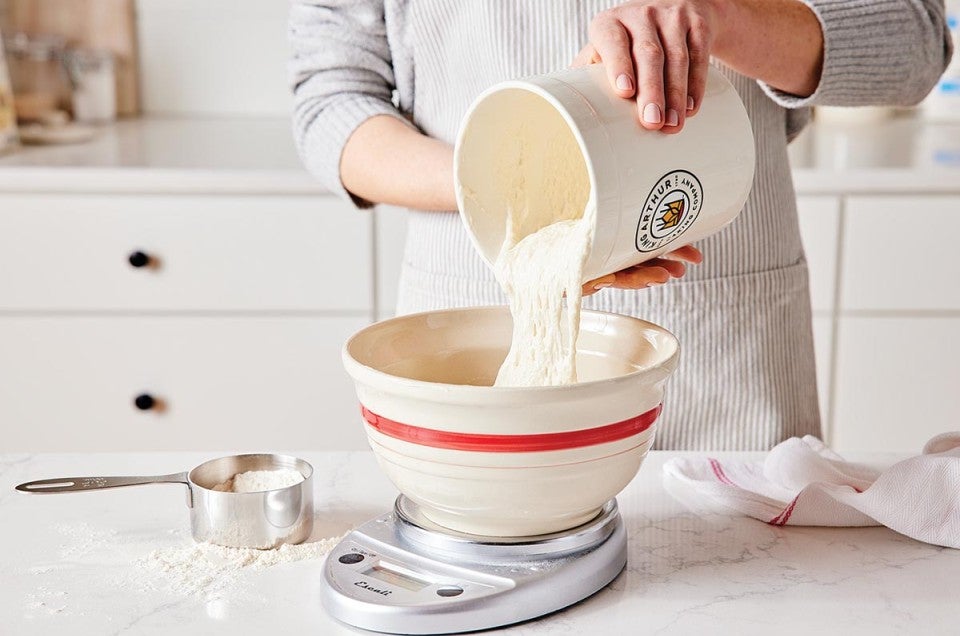


Sourdough baking can be exciting, challenging, mysterious, frustrating, delicious, and rewarding — all of the above, and often all at once.
If you've ever gone down the sourdough path — making your own starter, lovingly tending it, testing ways to make it more vigorous, wondering if it's healthy — you understand the many paths (and pitfalls) you encounter on the way to great sourdough bread (or cake, or pretzels, or biscuits).
There's nothing like sourdough baking for raising questions. The following sourdough baking tips address some of the most common questions we hear from you, our readers. And once you're done here, head on over to our complete guide to baking with sourdough, for a bit of history, baking science, and some of our favorite sourdough recipes.
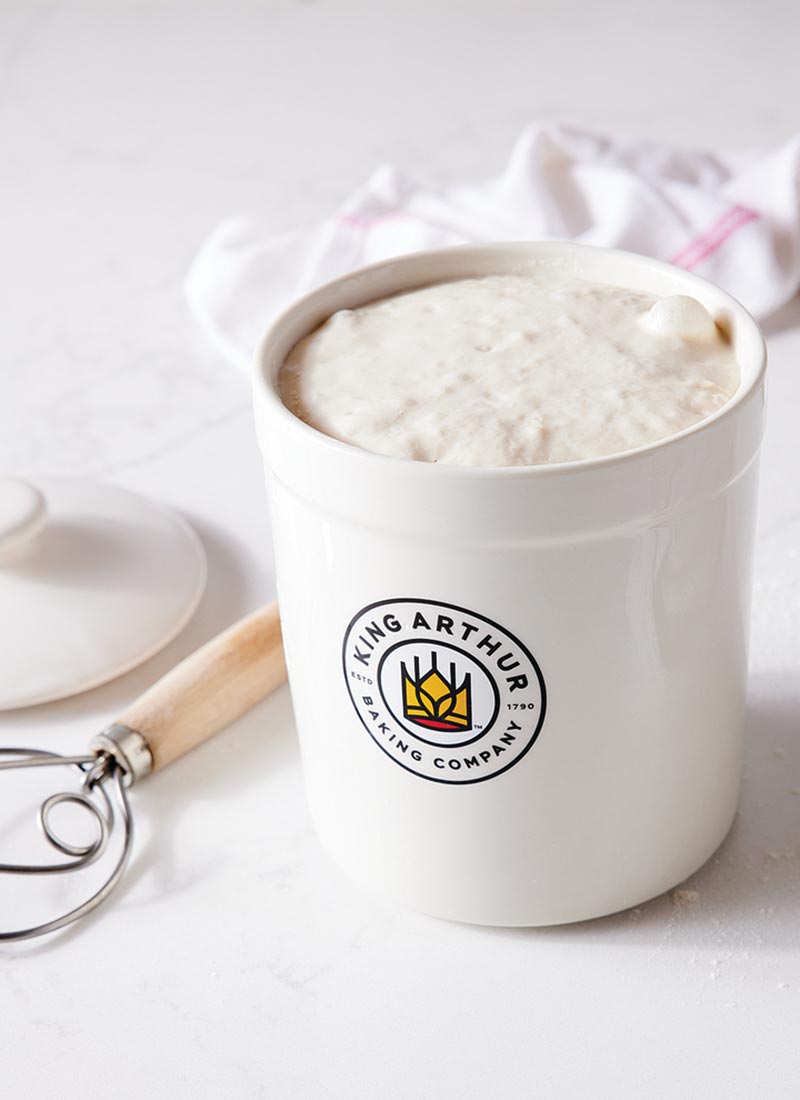
It's actually fairly difficult to kill your starter. Unlike a hothouse orchid, sourdough starter is pretty hardy.
If it's been a while since you've fed your starter, you may find it covered in dark liquid, with mosaic-like, lumpy dough underneath. The dark liquid is alcohol; just stir it back into the firmer dough underneath.
Feed your starter the way you usually would. If it doesn't respond well, feed it again; and again, feeding it every 12 hours until it becomes bubbly and happy.
Very occasionally, starter will attract some "bad" bacteria. It may acquire an unpleasant odor (not its usual sharp acidity, but something "off"), and may have a pinkish liquid on top. If this happens, discard your starter and begin over: our sourdough starter recipe will get you going again. Or jump-start the process with an order of our fresh sourdough starter, carefully grown and tended here in Vermont.
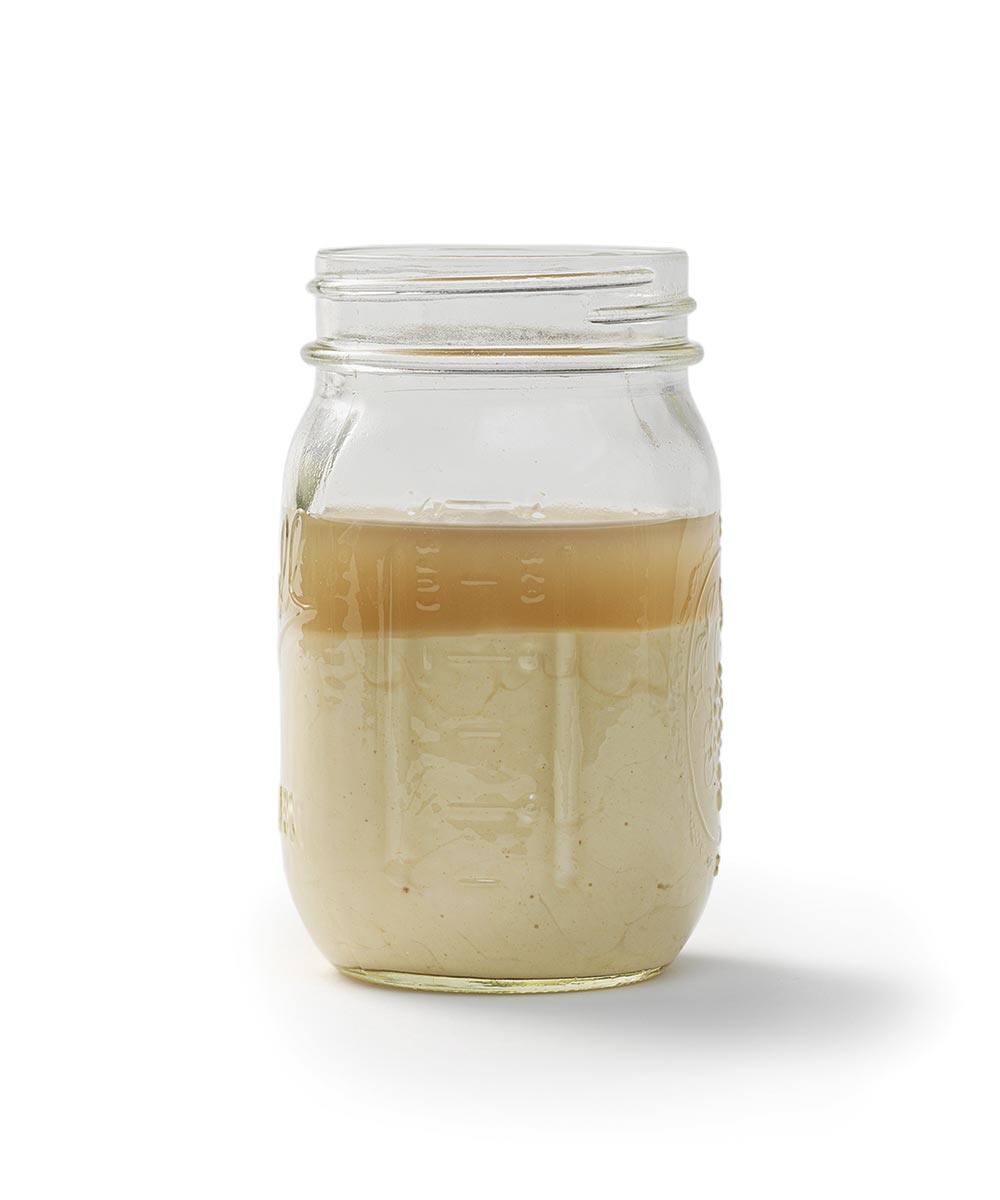
Even starter that's fed regularly will often exude a clear or amber-colored liquid. Again, this is alcohol; simply stir it back in, then proceed with your regular feeding process.
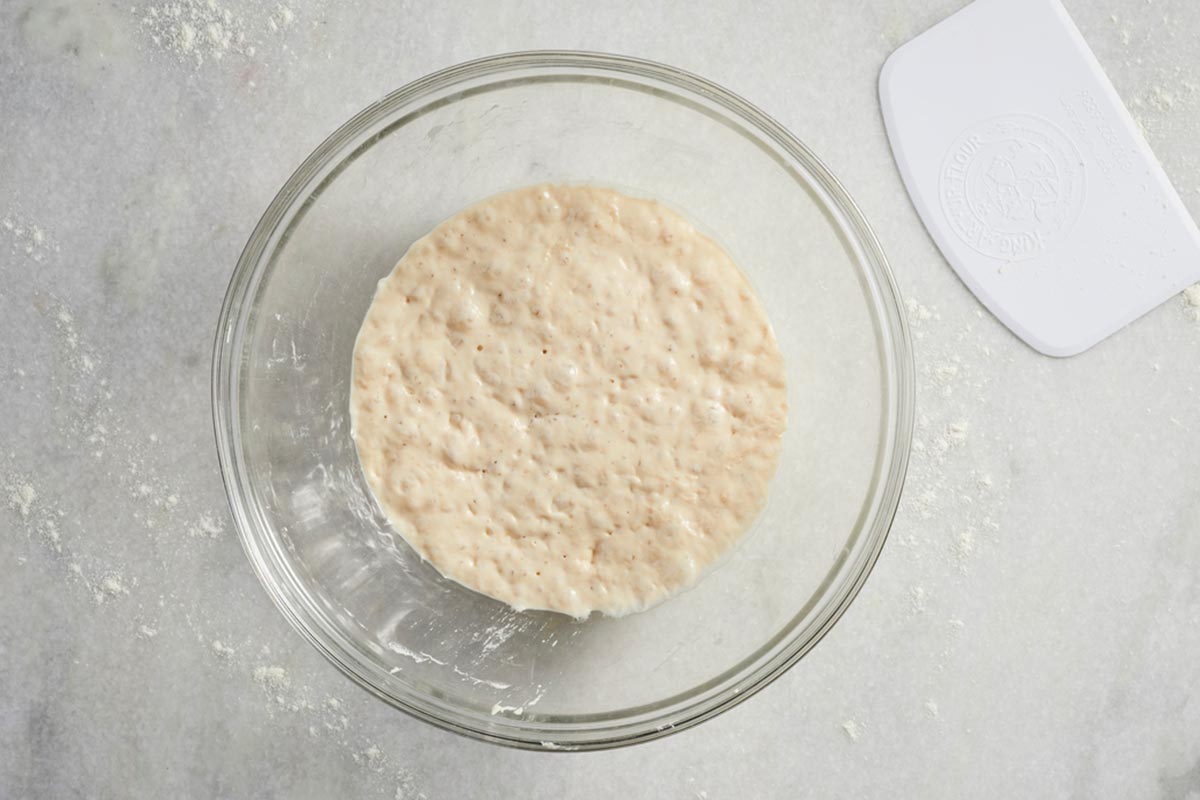
"I want to bake four loaves of bread; can I make more starter?"
Sure. If your starter generally yields enough for one loaf of bread after feeding, and you want to make two loaves, simply feed it with double the amounts of flour and water.
For instance, if you usually feed your starter with 4 ounces each water and flour, feed instead with 8 ounces each water and flour to increase its volume.
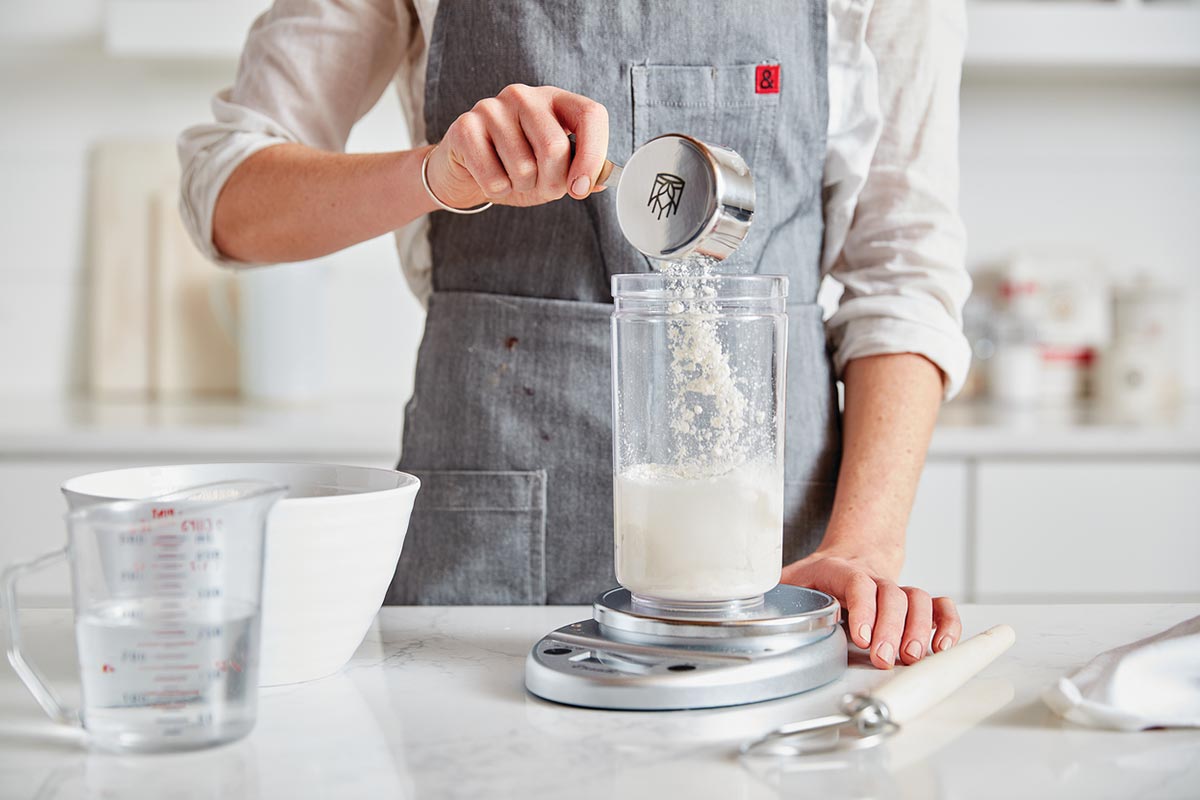
To grow it even more, simply feed with greater amounts of flour and water. It may take your starter longer to become vigorous since there's less living starter to "inoculate" the newly added flour and water. But give it time; eventually it should become bubbly. Once it doubles in volume within 8 hours, it's ready to use.
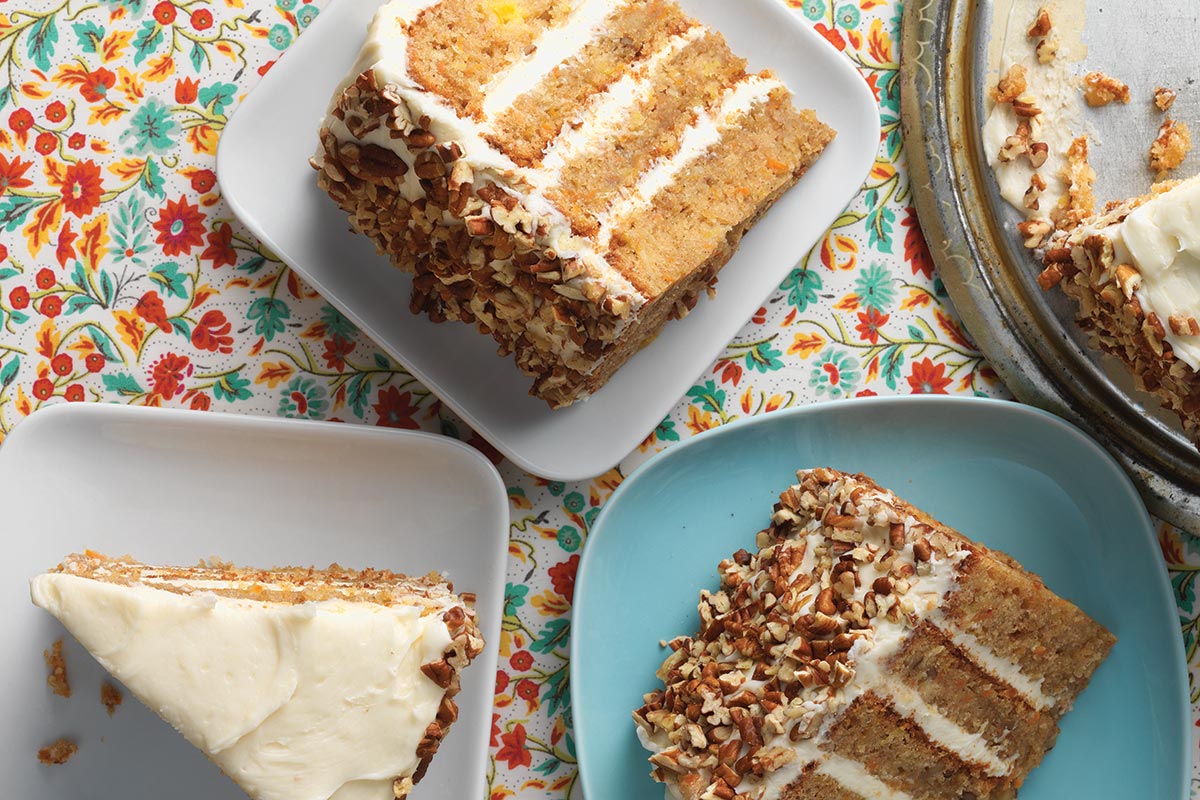
Oh, boy, lots of good stuff. Like this Sourdough Carrot Cake.
Or pizza, English muffins, pretzels, crackers, biscuits... see the 15+ recipes on our site using the starter you'd otherwise discard during the feeding process. And don't miss our blog post, Excess Sourdough: Five Tasty Ways to Use It Up.
Oh, and if you're a gardener/composter — your "discard" sourdough starter is a great compost accelerant! Go ahead and stir it into your outdoor bucket or bin.
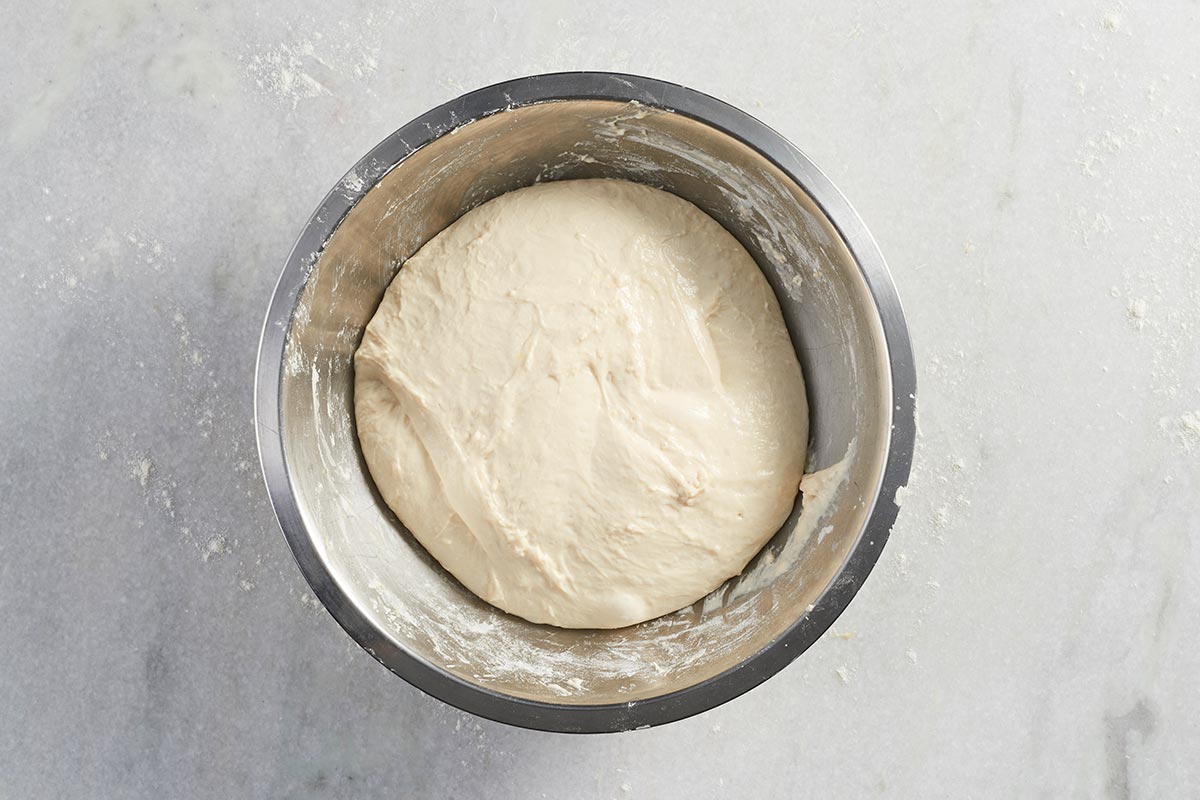
Properly prepared sourdough bread dough should look much the same as any other successful bread dough: smooth, satiny, elastic. It should cling a bit to the sides of the mixing bowl, but shouldn't be unmanageably sticky.
You may notice the surface of your sourdough dough isn't quite as smooth as standard dough; it may look a bit rough or "shredded," which simply reflects the fact that the acidity of the dough makes the gluten slightly more fragile, and a tiny bit less elastic. This is fine; carry on.
Not at all! In fact, one of our most popular sourdough recipes on our Buttery Sourdough Buns, which are soft and tender: typical dinner roll texture. You can make chewy/soft sourdough pizza crust and pretzels and breadsticks... the degree of your bread's crustiness has more to do with its other ingredients than its starter.
Generally speaking, the more fat in your recipe, the softer your bread will be. The crustiest sourdough breads are simply starter, flour, water, and salt; including milk and butter (or oil) and a bit of sugar will make softer breads.
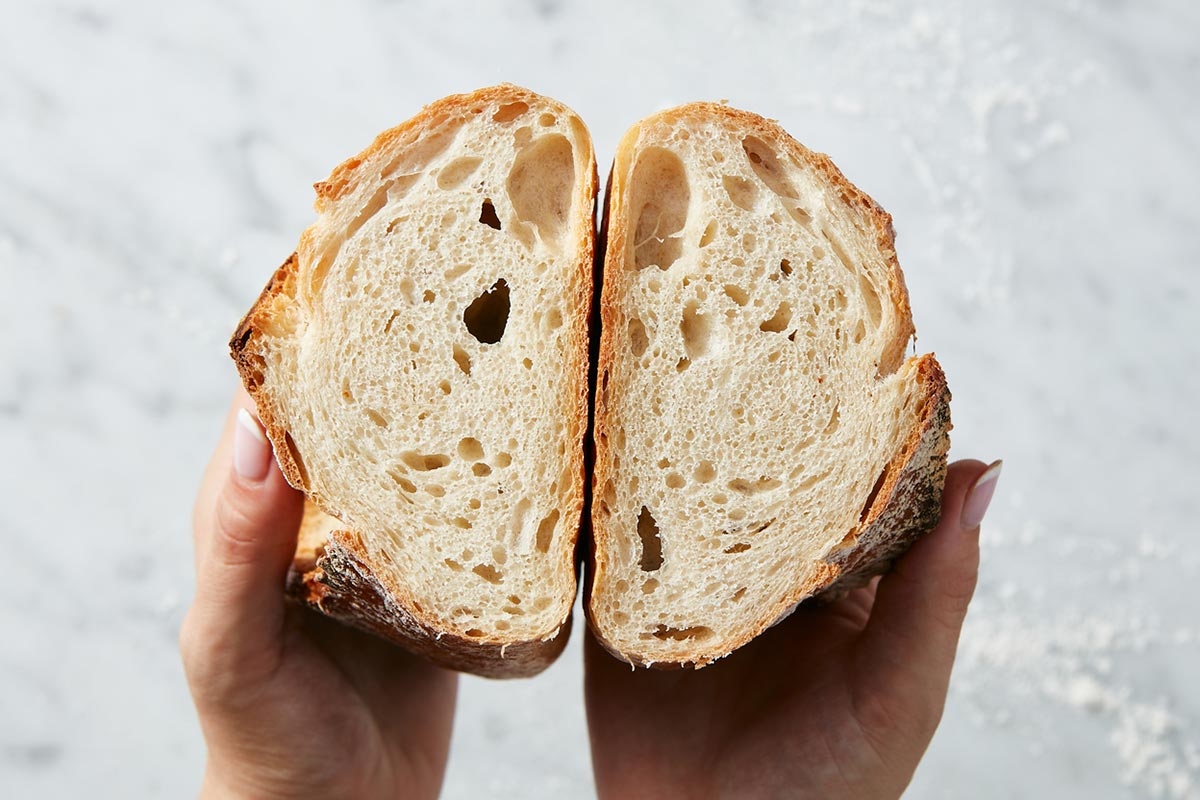
Ah, the $64,000 question! The more sour your starter the tangier your bread, right?
Not necessarily. The degree of sourness in sourdough bread has more to do with how the dough is prepared than how sour the starter is.
To increase your bread's sour flavor, try shaping the loaf, then refrigerating it overnight. The yeast in dough fermented in a cold environment will create acetic acid (think vinegar), rather than lactic acid (think sour cream); so its sour flavor will be more pronounced.
The loaf will rise slowly in the fridge. The next day, let it come to room temperature, then bake as normal. For stronger sour flavor, try keeping the dough in the fridge longer before baking — for several days, or maybe a week. At some point you'll come to a point of diminishing returns — the yeast will start to die, and your bread won't rise well — but it's worth experimenting with chilling duration to find your own personal "sweet sour spot."
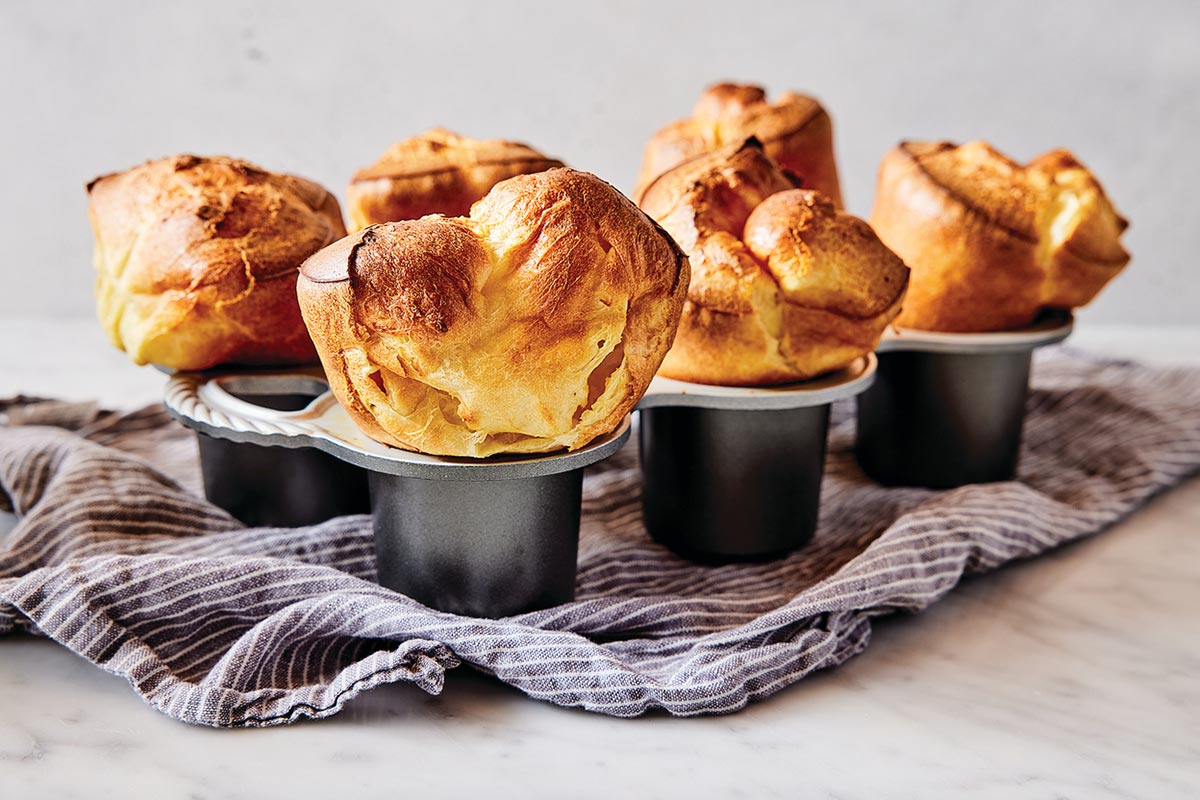
Yes, within reason. Would you want to use sourdough starter in angel food cake? Of course not. But in popovers (above)? Sure, give it a try.
Here's the rule of thumb: sourdough starter is equal parts (by weight) flour and liquid. Say you want to use 1 cup (8 ounces) sourdough starter in your favorite sandwich bread recipe. If your recipe calls for 3 cups flour (approx. 12 ounces) and 1 cup water (8 ounces), reduce the flour in the recipe to 2 cups (8 ounces), and the water to 1/2 cup (4 ounces).
This works pretty seamlessly for any recipe including both flour, and water or milk. Don't substitute sourdough starter for eggs or oil or butter or honey or other liquids; it will change your recipe's character.
Does the starter need to be fed before using it? Not necessarily. If you're using it in a yeast bread recipe, it's good to feed it first (to help with the loaf's rise). Bonus for using it in yeast breads: sourdough is a mold inhibitor.
But for anything leavened with baking soda or baking powder, use either fed or unfed starter; or starter you'd otherwise discard as part of the feeding process.
How much sourdough starter can you substitute? Keep in mind the more you use, the tangier your baked good will be. Start by substituting starter for no more than 1/3 of the flour in the recipe. If you like the result, then up the percentage the next time.
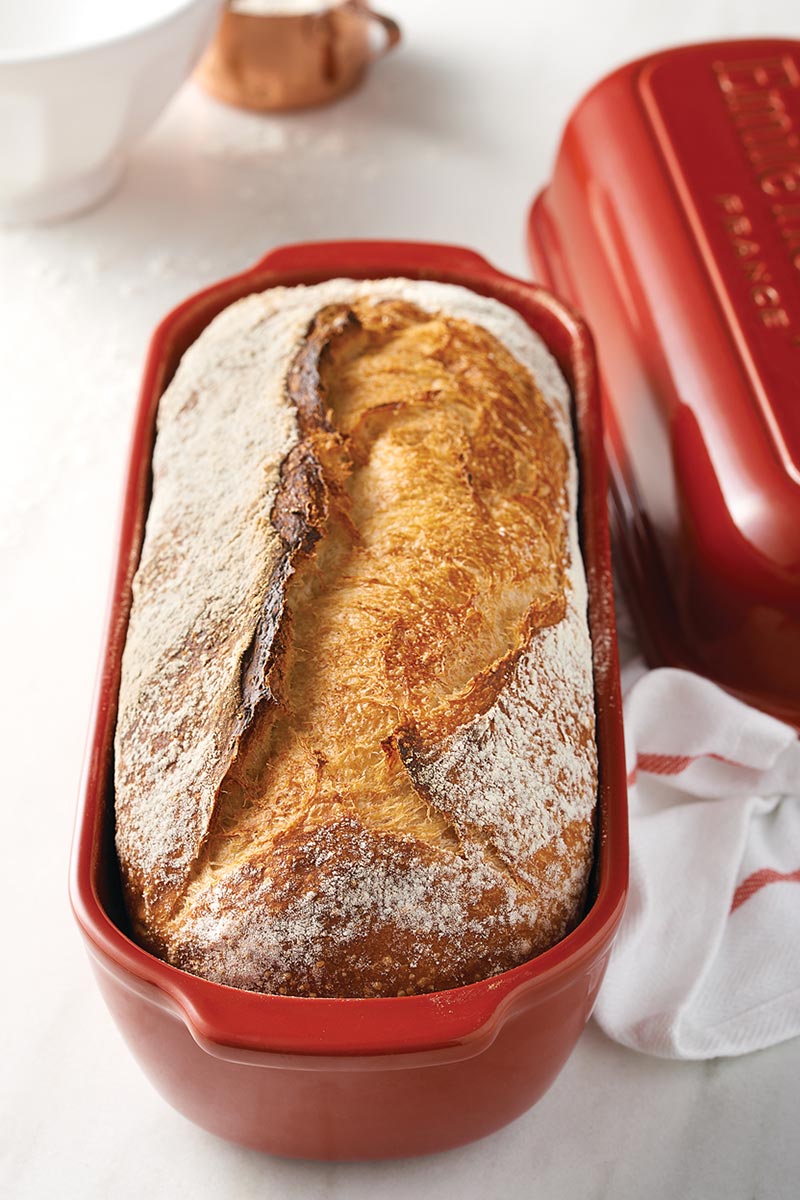
Yes, we certainly do. It's our No-Knead Sourdough Bread recipe, which delivers rich flavor and a golden, crisp crust.
Or for bread that tastes like sourdough without all the effort of maintaining a starter, make up a batch of our No-Knead Crusty White Bread dough. Leave the dough in the fridge for a week to 10 days before baking. The loaf or rolls you make will be richly flavored, with mild sourdough tang.
Or try this: Make our No-Knead Crusty White Bread dough, substituting 16 ounces of sourdough starter (fed or unfed) for 8 ounces of the water and 8 ounces of the flour. This time, let the dough rest in the fridge for only 2 to 3 days before baking. If you leave it longer than that, the sourdough will start to break down the dough's gluten, negatively affecting the dough's rise.
One important fact to remember: there are many paths to great sourdough baking. And many valid answers to your questions. When you find something that works for you, do it; don't worry about "breaking the rules," or following a recipe to the letter.
Sourdough baking, like most baking, is as much art as science; don't be afraid to color outside the lines!
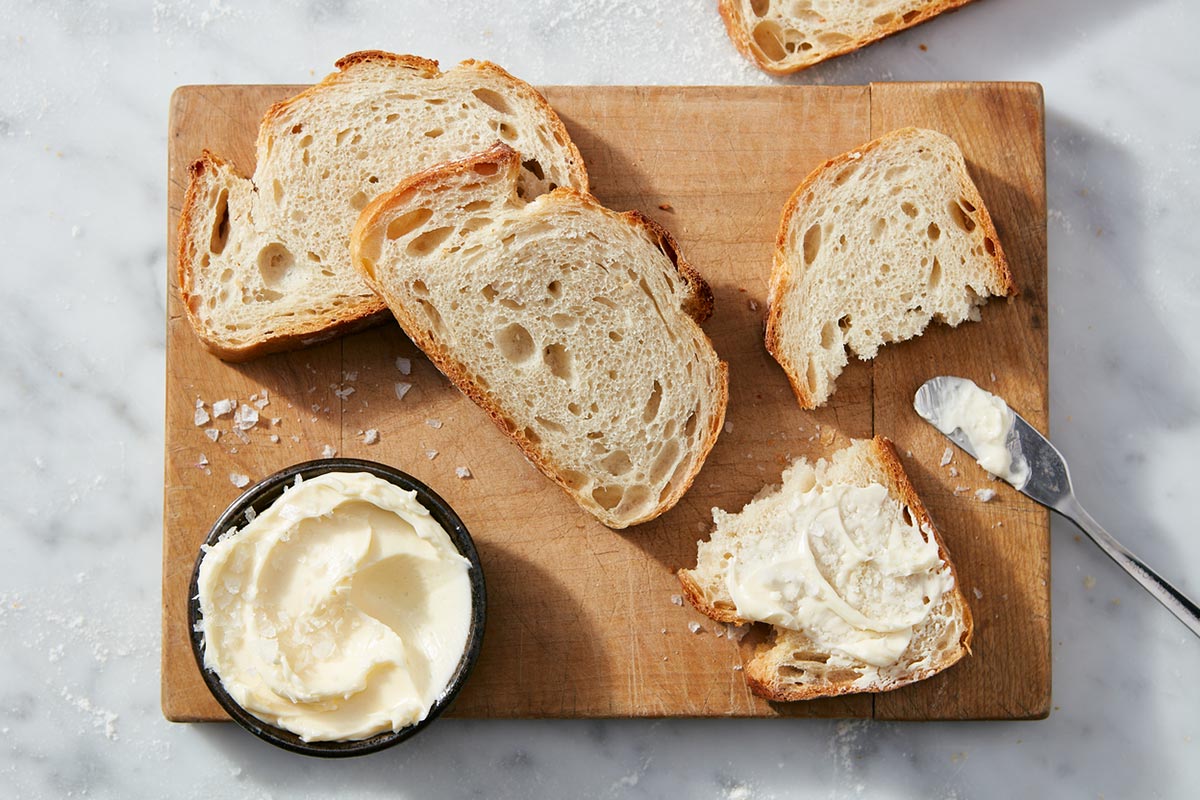
Do you have sourdough questions we haven't answered here — or other baking questions? Contact our Baker's Hotline; we're ready and eager to help.
Cover photo by Kristin Teig